Project Summary
Positioned within the ‘Connected’ and ‘Energy’ product teams, my job was to continually analyse, user test and iterate the designs for these journeys with the aim of increasing the conversion rate between the initial visit by a potential or existing customer to the sale of either the ‘Hive’ product range or one of the energy tariffs that were available.
Design Sprint
One example of how I achieved this goal was to facilitate a Design Sprint in order to gather thoughts and ideas from several different departments within the business and redesign how we might sell Energy to customers, instead of to continually iterate a flawed existing journey that had been added to and distorted over time as new business requirements surfaced.
Although the main aim from a business perspective was to increase the conversion and average order value of our Energy products, the second (but in my mind, equally as important) objective of the Design Sprint was to encourage members of different parts of the business (e.g. marketing, compliance, propositions, brand etc.) to think about ways to meet their own KPIs while thinking from the point of view of a customer. By introducing them to this user-centred approach my hope was that they would take away the methods and ideas learned in the 4-day sprint and use them in other projects while teaching others to do the same, thus boosting the overall UX maturity of the wider business.
Methods and skills used:
Workshop Facilitation
Design Sprint

Monday - Define & Ideate
The goal of the first day of the design sprint was to define what problem we are trying to solve and start to sketch some initial ideas on how to how solve that problem.
Morning - Define
By analysing and researching previous qualitative and quantitative data as a team as well as listening to lightning talks from ‘experts’ from within the business that understood the problems we were facing, we were able to isolate some potential key areas that needed our attention and create a long-term goal for the project. We did this by writing ‘How Might We’ notes in order to frame the problems that were surfaced as opportunities to be solved. As a team we then voted on which problem areas to pursue which were ‘How might we help customers better understand the energy products that we sell?’ and ‘How might we help customers to build a product that is right for them?’
Afternoon - Sketch
After deciding on which methods and areas to focus on, the aim was then to create a low-fidelity mockup of a solution. To do this, we split the team into two (one for each of the problem areas that we were trying to solve) and each group then researched existing products and solutions that already exist that could be adapted and built upon to answer our own problem. After demonstrating their finds to the whole team everybody then individually did four rounds of sketches to illustrate how they might solve the problem for the user.
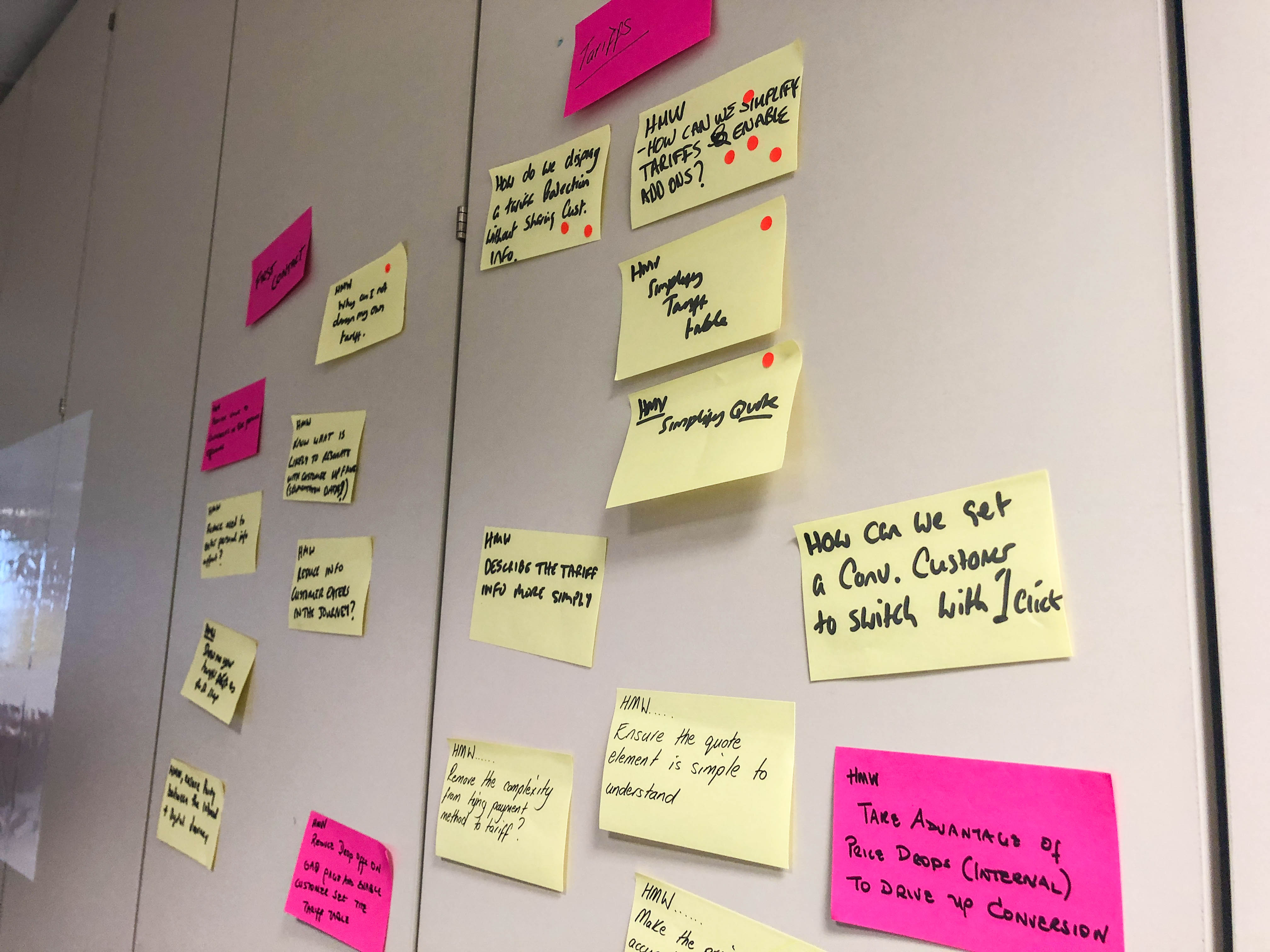
Voting on the best solutions to take forward.
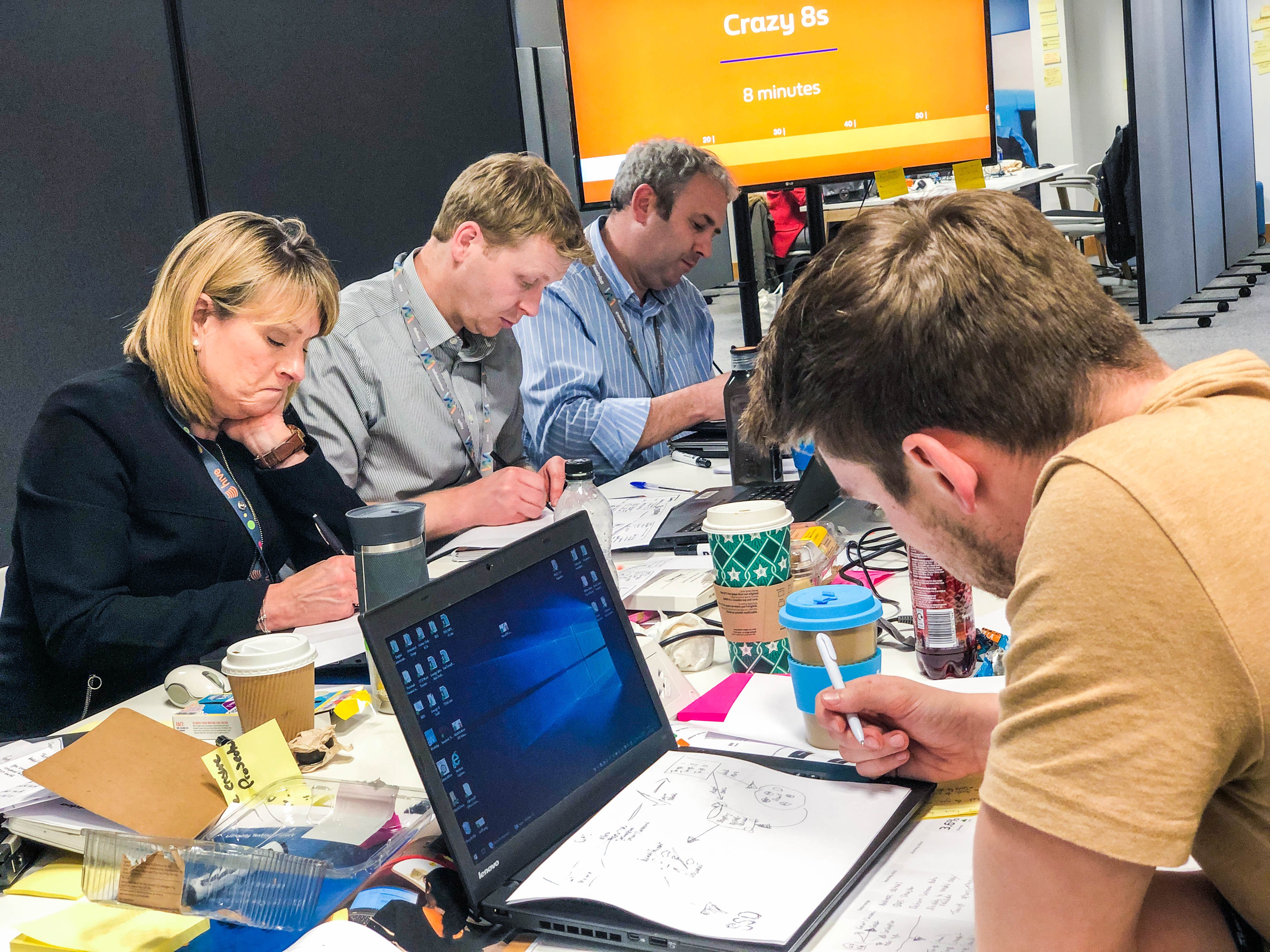
The team sketched their own ideas for solutions to the problems defined earlier in the day.
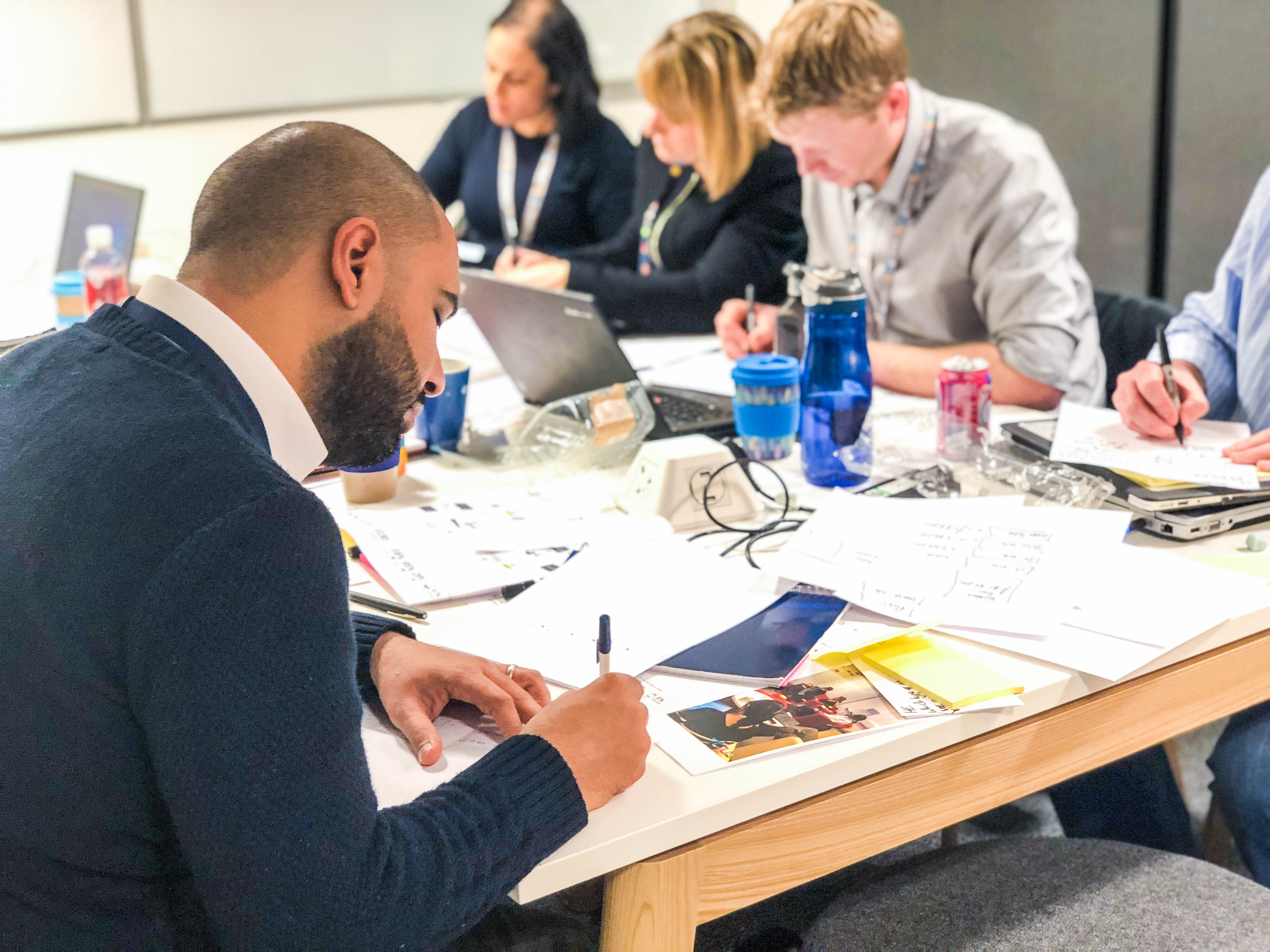
Tuesday - Decide and Refine
With the problem defined and the first ideas sketched out, Tuesday’s goal was to agree upon an idea together and then, as a team, create a storyboard and low-fidelity mockup.
Morning - Decide
The first stage was to decide which ideas from the previous day were the best solutions for our problem. This was done by, individually, voting (in silence) for each person’s favourite idea and then, as a group, coming together to discuss and further understand those ideas.
Afternoon - Refine
With a potential solution decided upon, the team then came together to create a storyboard for their new journeys, mapping out how a potential user would navigate through the product and how the UI may look in order to create a positive experience for the user. At the end of the second day, the team created a final low-fidelity mockup of the desired journey that could be taken forward and turned into a prototype for testing.

The team used sticky dots to vote on designs or features that they thought best solved the problem at hand.
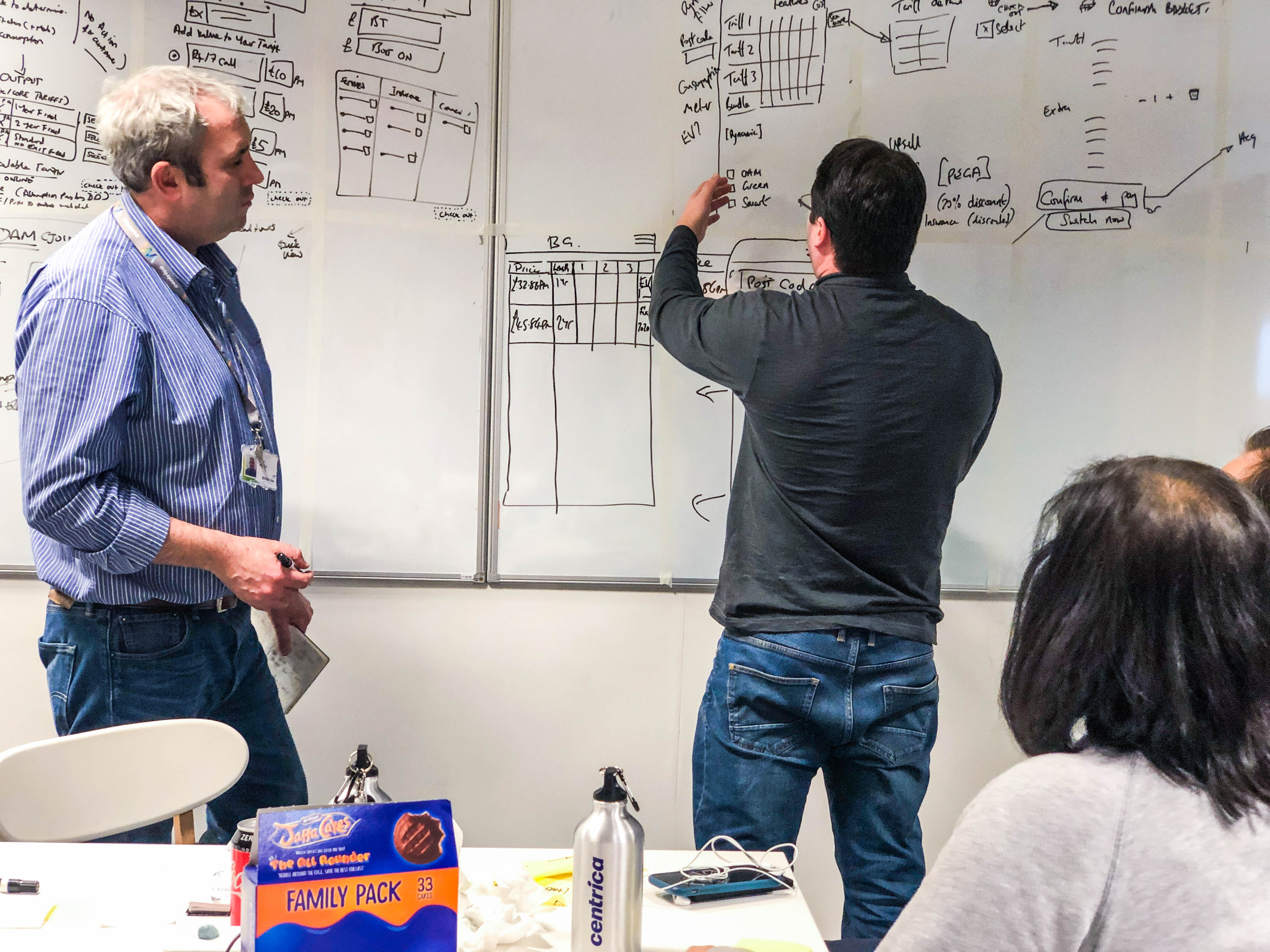
They then refined the initial ideas further, ready to be turned into a prototype for user testing.
Wednesday - Prototype
Taking the low-fidelity wireframes that the team created the previous day, I then created two interactive prototypes using Axure, that could then be tested with real users. With the secondary objective of the sprint in mind (to educate the wider business more about User Experience) I was careful to honour the original designs that were made, regardless of what would appear to me as being poor UX practice, knowing that any problems would likely be surfaced in the testing stage and the team could learn from these mistakes first hand.
Methods and skills used:
Sketch
Axure
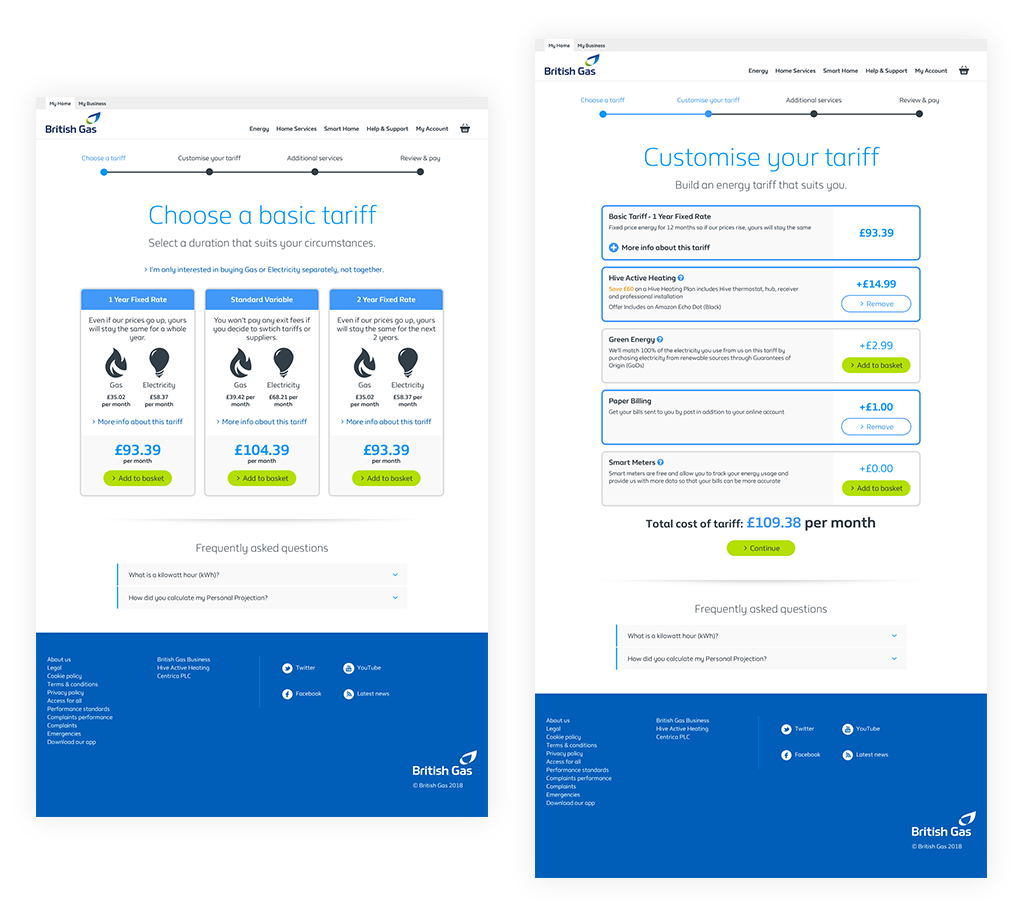
Desktop solution for customised tariffs.
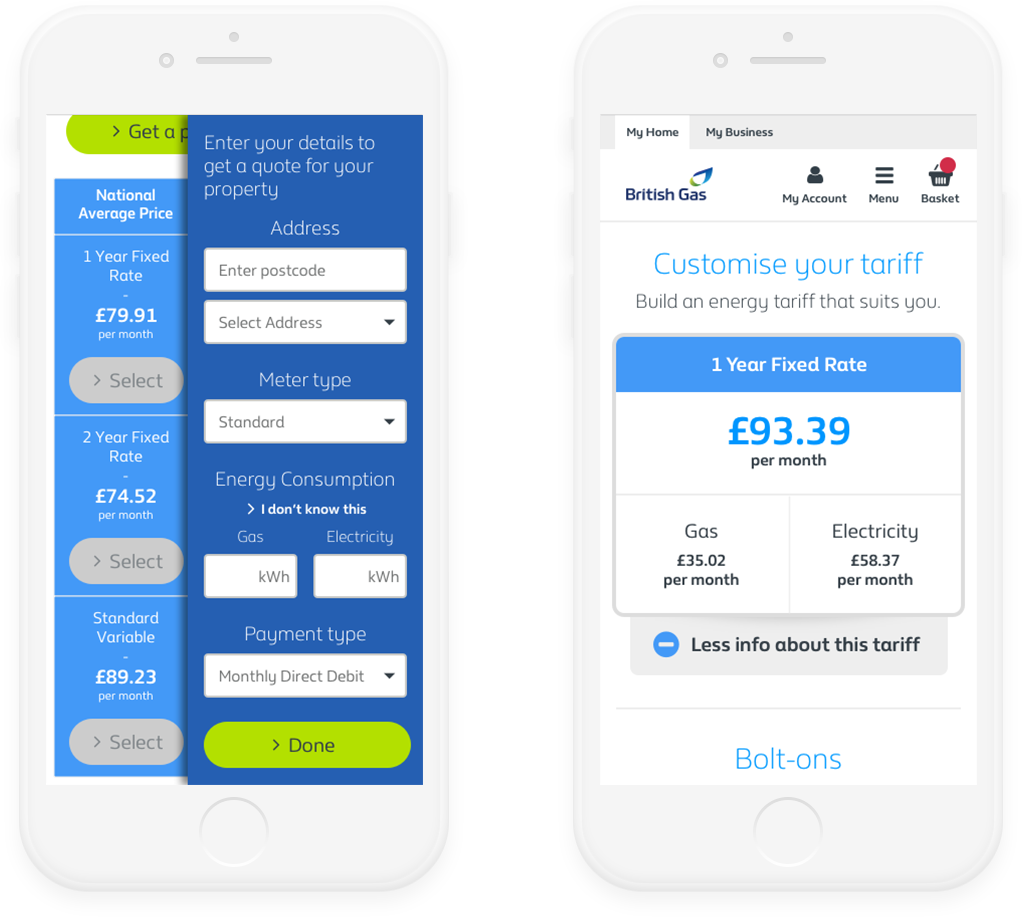
Mobile solution for detailed energy quotes.
Thursday - Test
The final stage was to test the prototypes with real users. I made sure to invite everybody back for this last stage in order for them to see first hand how users interacted with the prototypes that they created and learn how they could be improved.
We used an eye-tracking tool to give us more insight into what our users noticed, read and absorbed, even if they did not interact with those specific elements on the page. This was particularly helpful when interviewing participants who were less vocal or forethcoming with their observations.
Lessons Learned
Go and find participants in person and get to know them. I had never met many of the participants and the best way to get them to come along to the sprint was to get to know them better.
Give them the bigger picture first. Let everyone know why they are here.
Be ready to improvise. Ideas may be surfaced that need a different kind of approach to what you have planned.
There may be tricky participants so be strict for the benefit of the whole team.
People love the chance to be creative.